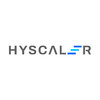Filter interviews by
Midas IT Services Interview Questions and Answers
9 Interview questions
Reverse routing is the process of generating a URL based on a route name and parameters.
Reverse routing helps in generating URLs dynamically based on route names and parameters
It allows for cleaner and more maintainable code by decoupling URLs from the code
Example: Generating a URL for a specific route like 'blog.post' with parameters like post ID
Dependency Injection is a design pattern in which a class receives its dependencies from external sources rather than creating them itself.
Allows for better code reusability and testability
Promotes loose coupling between classes
Dependencies are injected into a class through constructor injection, setter injection, or interface injection
Seismic coefficient is a value used to calculate the seismic force acting on a structure during an earthquake.
It is a factor that takes into account the seismic hazard of a particular location.
It is used in the design of structures to ensure they can withstand seismic forces.
The seismic coefficient is dependent on the soil type, building height, and other factors.
It is typically expressed as a decimal or percentag...
Equivalent static method is a simplified approach to calculate seismic forces on a building.
It assumes that the seismic forces can be represented by a single static force acting on the center of mass of the building.
It is commonly used for low-rise buildings with regular shapes and uniform mass distribution.
It is not suitable for tall or irregular buildings with significant mass and stiffness variations.
The method...
Corner columns should be designed to resist both axial and bending loads.
Consider the load-bearing capacity of the column material
Determine the maximum load that the column will need to support
Ensure that the column is properly braced to prevent buckling
Design the column to resist both axial and bending loads
Consider the geometry of the column and the surrounding structure
An ILD for moment and shear at supports of a simply supported beam is required.
Draw a horizontal line representing the beam.
Mark the supports at either end of the line.
Draw vertical lines at the supports to represent the reactions.
Draw arrows to represent the direction and magnitude of the shear forces at each support.
Draw bending moment diagrams between the supports to represent the moment at each point.
Label the...
An Influence Line Diagram shows the variation of a response function at a specific point due to a unit load moving along the structure.
It is a graphical representation of the effect of a unit load on a structure.
It helps in determining the maximum and minimum values of a response function at a specific point.
It is used in designing and analyzing structures such as bridges and trusses.
It is also used in determining...
Strength is the ability to withstand stress without deformation, while stiffness is the ability to resist deformation under stress.
Strength is a measure of how much force a material can withstand before breaking or deforming.
Stiffness is a measure of how much a material resists deformation under stress.
Strength is related to the maximum stress a material can handle, while stiffness is related to the slope of the s...
India has 4 seismic zones based on the intensity of earthquakes.
India is divided into 4 seismic zones - Zone 2, 3, 4, and 5
The zones are based on the intensity of earthquakes
Zone 5 is the most seismically active zone
The zones help in designing earthquake-resistant structures
Midas IT Services Interview Experiences
12 interviews found
- Q1. Mysql Optimization
- Q2. Symfony basic question
(2 Questions)
- Q1. What is reverse routing
- Ans.
Reverse routing is the process of generating a URL based on a route name and parameters.
Reverse routing helps in generating URLs dynamically based on route names and parameters
It allows for cleaner and more maintainable code by decoupling URLs from the code
Example: Generating a URL for a specific route like 'blog.post' with parameters like post ID
- Q2. What is dependency Injection.
- Ans.
Dependency Injection is a design pattern in which a class receives its dependencies from external sources rather than creating them itself.
Allows for better code reusability and testability
Promotes loose coupling between classes
Dependencies are injected into a class through constructor injection, setter injection, or interface injection
Skills evaluated in this interview
(1 Question)
- Q1. How many year experience ? on which Technology ? website which you worked on ? your Role ? which part of website you worked ? write down the Data base query for this search ?
Interview Preparation Tips
I applied via Campus Placement and was interviewed in Aug 2021. There were 2 interview rounds.

(4 Questions)
- Q1. What is equivalent static method?
- Ans.
Equivalent static method is a simplified approach to calculate seismic forces on a building.
It assumes that the seismic forces can be represented by a single static force acting on the center of mass of the building.
It is commonly used for low-rise buildings with regular shapes and uniform mass distribution.
It is not suitable for tall or irregular buildings with significant mass and stiffness variations.
The method is b...
- Q2. What is seismic coefficient?
- Ans.
Seismic coefficient is a value used to calculate the seismic force acting on a structure during an earthquake.
It is a factor that takes into account the seismic hazard of a particular location.
It is used in the design of structures to ensure they can withstand seismic forces.
The seismic coefficient is dependent on the soil type, building height, and other factors.
It is typically expressed as a decimal or percentage.
For...
- Q3. How to design corner column?
- Ans.
Corner columns should be designed to resist both axial and bending loads.
Consider the load-bearing capacity of the column material
Determine the maximum load that the column will need to support
Ensure that the column is properly braced to prevent buckling
Design the column to resist both axial and bending loads
Consider the geometry of the column and the surrounding structure
- Q4. How many seismic zone exist in India?
- Ans.
India has 4 seismic zones based on the intensity of earthquakes.
India is divided into 4 seismic zones - Zone 2, 3, 4, and 5
The zones are based on the intensity of earthquakes
Zone 5 is the most seismically active zone
The zones help in designing earthquake-resistant structures
Interview Preparation Tips
- Structural Engineering
Answer confidently
Skills evaluated in this interview
I applied via Walk-in and was interviewed before Aug 2022. There were 3 interview rounds.

The interviewer was very rigid & keep on asking as if she was going to marry me
(2 Questions)
- Q1. Tell me something about ourselves
- Q2. I introduce my past experience & my qualifications.
Interview Questionnaire
1 Question
- Q1. I was asked questions related to my work experience. About the domain knowledge. It was not that much of tough..if you are having a good experience then you can answer it simply.
Interview Questionnaire
4 Questions
- Q1. Tell me about yourself
- Q2. What are your strengths and weaknesses?
- Q3. How is winning important for you? Is losing important as well?
- Q4. What role would you mainly prefer playing: a team leader or a team member?
Interview Preparation Tips
Experience: I mentioned about all my credentials in my resume in a very compact and precise manner, so that more information in conveyed in few words. This I hoped would also impress the evaluators.
I had previously prepared a resume for my internship. I prepared my job resume with the help of this resume. I applied for only 2 companies and while applying in these companies I used the same resume but only ameliorated my areas of interest.
Round: HR Interview
Experience: The company shortlisted candidates on the basis of their resume. What I inferred from the shotlisting procedure was that one only needed to possess some research experience and a good internship to get shortlisted. For Midas 14 candidates were shortlisted from the Civil Engineering department.
The only round the company conducted was the personal interview round. The interview was of 40 minutes duration. Surprisingly I wasn’t asked any technical questions throughout the interview though the others were asked a few of them. In the technical questions that were asked to others the interviewers mainly focused on structural engineering part. I was only asked some H.R. questions. They were basically trying to assess my personality through their questions.
College Name: IIT ROORKEE
Motivation: When I was in my first year one of my departmental seniors got placed in the company. He was my first source of information about the company and the profile. Consequently Midas had been my dream company since my first year. The job is related mainly to the designing.
Interview Questionnaire
9 Questions
- Q1. Tell me someting about yourself?
- Ans.
I am a structural engineer with experience in designing and analyzing various types of structures.
I have a degree in civil engineering with a focus on structural design.
I have worked on projects ranging from small residential buildings to large commercial structures.
I am proficient in using software such as AutoCAD, Revit, and SAP2000.
I have experience in analyzing and designing steel, concrete, and timber structures.
I...
- Q2. 3 Strengths and weaknesses
- Ans.
Strengths: Attention to detail, problem-solving, communication. Weaknesses: Public speaking, delegation, impatience.
Strength: Attention to detail - I am meticulous in my work and pay close attention to every detail to ensure accuracy.
Strength: Problem-solving - I enjoy finding solutions to complex problems and am able to think creatively to come up with innovative solutions.
Strength: Communication - I am able to effect...
- Q3. Few things that you learnt from your family?
- Ans.
My family taught me the importance of hard work, perseverance, and kindness.
My parents instilled in me a strong work ethic from a young age.
My grandparents taught me the value of perseverance in the face of adversity.
My siblings and I were raised to always be kind and respectful to others.
My family also emphasized the importance of education and lifelong learning.
- Q4. Give examples from your life when you faced some hardships?5. Any plan for higher studies?
- Ans.
I faced hardships during my undergraduate studies, but persevered and graduated with honors. I plan to pursue a master's degree in structural engineering.
Overcoming financial difficulties to pay for tuition and living expenses
Balancing a part-time job with a rigorous course load
Dealing with personal health issues that affected my academic performance
Seeking help from professors and peers to improve my understanding of ...
- Q5. Why join MIDAS?
- Ans.
MIDAS offers a challenging and rewarding work environment with opportunities for growth and development.
MIDAS values its employees and provides a supportive work culture
MIDAS is a leader in the industry and offers exposure to cutting-edge technology
MIDAS encourages innovation and creativity in problem-solving
MIDAS provides opportunities for career advancement and professional development
MIDAS has a strong reputation fo...
- Q6. What do you expect from MIDAS?
- Ans.
I expect MIDAS to provide efficient and reliable structural analysis and design solutions.
Accurate and detailed analysis of complex structures
Efficient and user-friendly software interface
Reliable and safe design solutions
Ability to handle large-scale projects
Excellent technical support and customer service
- Q7. 1. Difference Between Strength & Stiffness?
- Ans.
Strength is the ability to withstand stress without deformation, while stiffness is the ability to resist deformation under stress.
Strength is a measure of how much force a material can withstand before breaking or deforming.
Stiffness is a measure of how much a material resists deformation under stress.
Strength is related to the maximum stress a material can handle, while stiffness is related to the slope of the stress...
- Q8. 2. What is an Influence Line Diagram?
- Ans.
An Influence Line Diagram shows the variation of a response function at a specific point due to a unit load moving along the structure.
It is a graphical representation of the effect of a unit load on a structure.
It helps in determining the maximum and minimum values of a response function at a specific point.
It is used in designing and analyzing structures such as bridges and trusses.
It is also used in determining the ...
- Q9. 3. Draw an ILD for moment and shear at supports of a simply supported beam
- Ans.
An ILD for moment and shear at supports of a simply supported beam is required.
Draw a horizontal line representing the beam.
Mark the supports at either end of the line.
Draw vertical lines at the supports to represent the reactions.
Draw arrows to represent the direction and magnitude of the shear forces at each support.
Draw bending moment diagrams between the supports to represent the moment at each point.
Label the diag...
Interview Preparation Tips
Experience: Was very confident and comfortable with the round.
Tips: Be confident in your answer.
Round: Interview
Experience: As i was through with my subjects this round also went quite well.
Tips: Brush your technical skills regularly.
General Tips: Never be nervous,stay confidance,and always give the best in you.
Skill Tips: Brush up regularly with your technical knowledge and bring out the best with your communication.
Skills: Communication skills, Technical skills
College Name: IIT ROORKEE
Motivation: I am a self motivator and always dreamt about working for a best company and i made it.
Interview Questionnaire
2 Questions
- Q1. Tell me about yourself
- Ans.
I am a technical sales and support engineer with experience in providing solutions to customers and resolving technical issues.
I have a degree in engineering and have worked in the field for 5 years
I am skilled in communicating technical information to non-technical customers
I have experience in troubleshooting and resolving technical issues
I am familiar with various software and hardware systems
I am a team player and ...
- Q2. What are career goals?
- Ans.
My career goal is to continuously learn and grow in my field while contributing to the success of the company.
To become an expert in my field
To take on leadership roles and mentor others
To contribute to the growth and success of the company
To continuously learn and stay up-to-date with industry trends and advancements
Interview Preparation Tips
Experience: I used only one resume for all the companies that I applied to. I mentioned my extra-curricular activities and my projects, with the projects relevant to the profile on offer getting higher priority.
Round: HR Interview
Experience: For the HR Interviews I prepared sample answers to some questions. The company carried out a short-listing process. The criterion for being short-listed was only the CGPA. The shortlisted candidates were called for the interviews.The interview panel consisted of three members. One of them was constantly bombarding me with technical questions, whereas the other two were doing an assessment of my personality ensuring that survival outside India won’t be a problem for me.The technical questions were based on my areas of interest i.e. on IC engines and fluid machinery. The questions on fluid machinery were mainly from pumps. In one of the questions i was asked that if water at certain pressure is kept on ground level, then till what height will the water rise). The other question was to state the differences between compressor, blower and fan. There were no questions asked from IC engines.
College Name: IIT ROORKEE
Motivation: I came to know about the company through the placement cell. All the information regarding it was given by the company officials. They were looking for people who can live and work in Korea and those who have had past experience of living outside their country.
Interview Questionnaire
3 Questions
- Q1. How many friends do you have?
- Ans.
I have a close group of 5 friends and a larger circle of acquaintances.
I prioritize quality over quantity in my friendships
My close friends are people I trust and can rely on
I enjoy meeting new people and expanding my social circle
I maintain friendships through regular communication and spending time together
I value diversity in my friendships, including different backgrounds and interests
- Q2. What do your friends think about you?
- Ans.
My friends think I am reliable, funny, and a good listener.
Reliable
Funny
Good listener
- Q3. What do you think about yourself?
- Ans.
I am a hardworking and determined individual with a positive attitude towards life.
I believe in setting goals and working towards achieving them.
I am always willing to learn and improve myself.
I am a good team player and enjoy collaborating with others.
I am passionate about my work and take pride in delivering quality results.
I am adaptable and can handle challenging situations with ease.
Interview Preparation Tips
Experience: The company conducted a shortlist on the basis of the resume. I expected that the criterion would be a good CGPA or a foreign internship, but I had neither, thus my selection for the next round came as a surprise to me. It was later on that I realised that the various competitions that I had won and about which I had mentioned in my resume paved way for my selection for the next round. Out of the 85 people who submitted their resume only 19 got selected for the interview round.It is on the basis of the resume that questions are asked; hence you have to be fully aware of the stuff you have written in your resume. Also in front of the interview panel you have to prove what you are saying by constantly giving examples based on your resume.
Round: HR Interview
Experience: The interview was an HR as well as technical interview. The technical questions were mainly related to earthquake engineering which was my area of interest. In one of the questions the interviewer asked me to draw a graph of ‘Sa/g vs t’ and to explain it. I managed to draw it and also explained it right. However I did not get selected.
Tips: During the interview it is up to you to direct the flow of the interview. You have to keep the interviewer well within your area of interest.
College Name: IIT ROORKEE
Top trending discussions






Midas IT Services Interview FAQs
Tell us how to improve this page.
Midas IT Services Interviews By Designations
- Midas IT Services Technical Sales Support Engineer Interview Questions
- Midas IT Services Technical Support Engineer Interview Questions
- Midas IT Services Software Engineer Interview Questions
- Midas IT Services Structural Engineer Interview Questions
- Midas IT Services Software Quality Analyst Interview Questions
- Midas IT Services Vice President Interview Questions
- Midas IT Services Senior PHP Developer Interview Questions
- Midas IT Services CSR Executive Interview Questions
- Show more
Interview Questions for Popular Designations
- Senior Executive Interview Questions
- Software Developer Interview Questions
- Business Analyst Interview Questions
- Senior Engineer Interview Questions
- Sales Executive Interview Questions
- Associate Software Engineer Interview Questions
- Java Developer Interview Questions
- System Engineer Interview Questions
- Show more
Overall Interview Experience Rating
based on 3 interview experiences
Difficulty level
Duration
Interview Questions from Similar Companies
Midas IT Services Reviews and Ratings
based on 40 reviews
Rating in categories
|
Senior Software Engineer
12
salaries
| ₹7.2 L/yr - ₹11.2 L/yr |
|
Senior Software Developer
12
salaries
| ₹7 L/yr - ₹10.2 L/yr |
|
PHP Developer
9
salaries
| ₹4.8 L/yr - ₹10.8 L/yr |
|
Technical Lead
7
salaries
| ₹10.2 L/yr - ₹21 L/yr |
|
Softwaretest Engineer
6
salaries
| ₹5.5 L/yr - ₹7.5 L/yr |

Zidio Development

Northcorp Software

Accel Frontline

Elentec Power India (EPI) Pvt. Ltd.
- Home >
- Interviews >
- Midas IT Services Interview Questions















